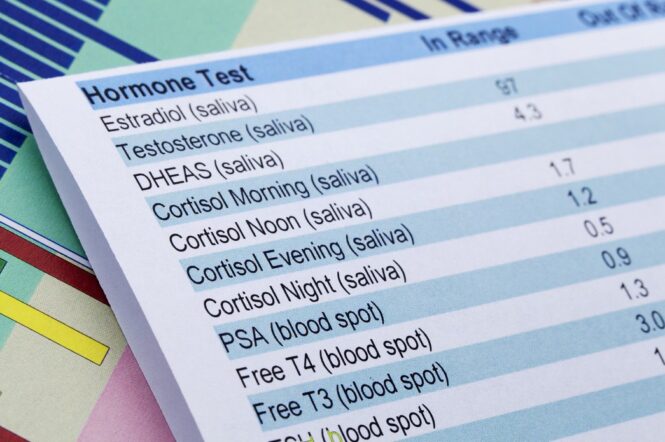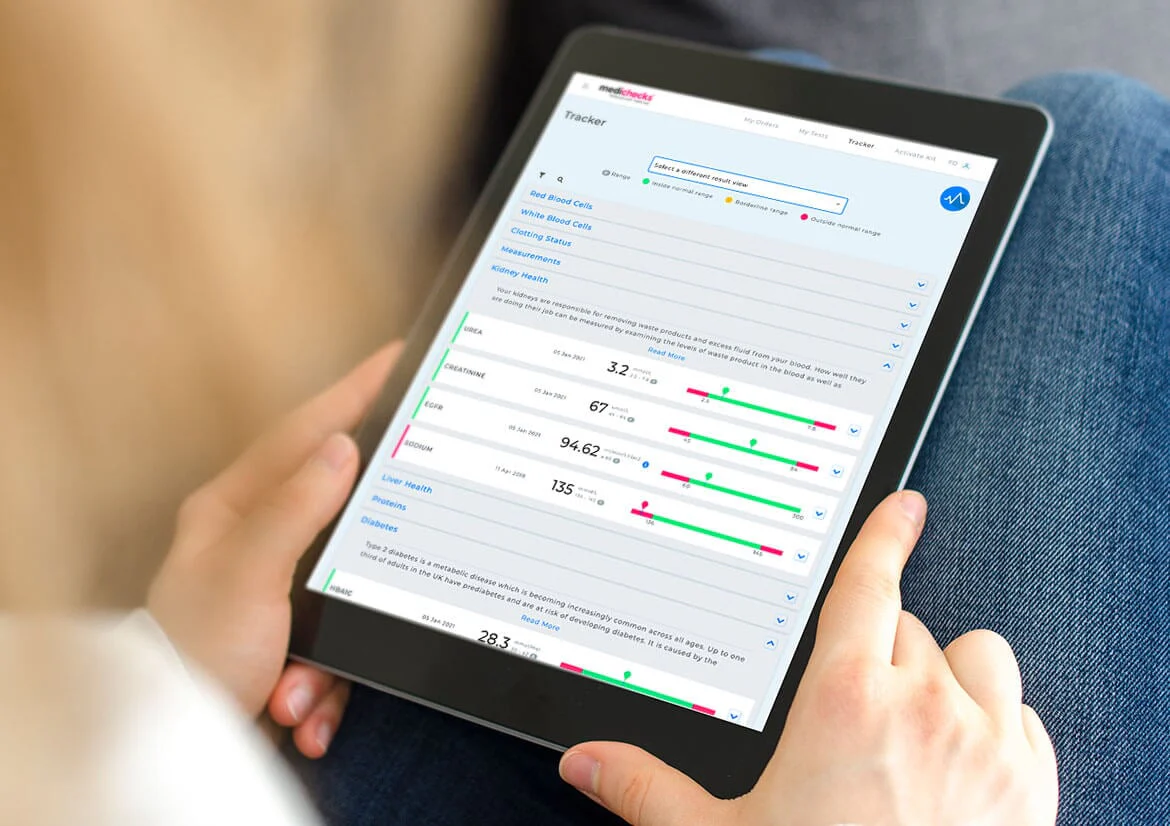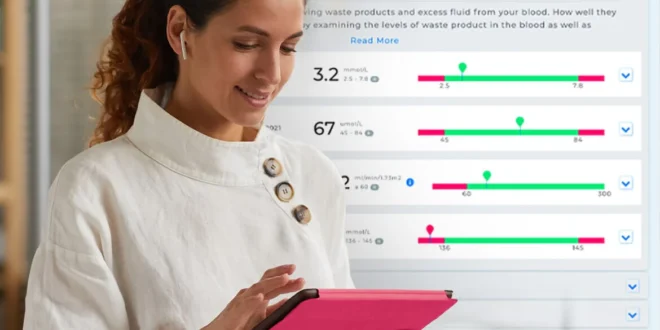Understanding how our hormones behave isn’t a luxury; it’s a necessity. For many women, subtle shifts in mood, energy, or weight can stem from internal imbalances that are often overlooked. And let’s face it: traditional doctor visits don’t always give us the full picture or the comfort to ask every question on our mind. This is where online hormone testing comes into play.
With today’s technology, we can track our hormonal health from home. These kits aren’t just about convenience; they offer clarity, control, and early intervention. But how do they work? Are they accurate? And when should you use one?
This guide walks you through everything you need to know about online health tests for hormonal insight, what they test for, how reliable they are, and how to make the most of them.
Key Highlights
- Online hormone tests are transforming women’s access to personal health data.
- They offer insight into hormone-related issues like fatigue, weight gain, PMS, and more.
- Tests typically use saliva, blood spot, or urine samples collected at home.
- Accurate timing and following instructions are key for reliable results.
- Many labs are CLIA-certified, ensuring quality and reliability.
- You can track results over time and adjust your wellness plan accordingly.
Why Test Hormones at Home?
Our hormones regulate everything from our sleep and mood to metabolism and fertility. But hormonal shifts don’t always scream for attention, they often whisper through subtle signs like brain fog, acne flare-ups, or changes in libido. When these whispers turn into discomfort, testing becomes essential.
Online hormone tests provide an accessible way to take charge of your health without needing to wait for referrals, lab appointments, or follow-ups that stretch over weeks. They allow you to test cortisol, estrogen, progesterone, DHEA, and thyroid function, all from the comfort of your home. For many women, this level of control feels empowering.
There’s also the added benefit of privacy. Many people feel uncomfortable discussing issues like low libido or irregular periods with their doctor. With online tests, you have the space to explore your concerns without judgment or embarrassment.

How Online Hormone Tests Work
These tests typically involve non-invasive collection methods:
- Saliva testing ─ Great for testing cortisol and certain sex hormones.
- Dried blood spot ─ A finger prick used for testing things like thyroid hormones and vitamin D.
- Urine testing ─ Often used for comprehensive hormone metabolite panels.
After ordering a kit, you follow the instructions to collect your sample and mail it back. Results are usually returned within 5 to 10 days and are often accompanied by doctor-reviewed insights or recommendations.
One highly rated option for a home female health test covers several critical markers—estrogen, progesterone, testosterone, DHEA, and cortisol—making it a good starting point if you’re noticing signs of imbalance but aren’t sure where to begin.
What Hormones Can Be Tested?
Depending on the provider and the type of test, here are the most common hormones included:
Estrogen
Primarily responsible for menstrual cycle regulation, skin health, and mood. Too much or too little can lead to PMS, weight issues, and fatigue.
Progesterone
Key for balancing estrogen and supporting sleep, mood, and fertility. Low levels are common in women with irregular cycles or difficulty conceiving.
Cortisol
Your main stress hormone. High levels may point to chronic stress, while low levels can cause burnout, poor immune response, and fatigue.
DHEA
This precursor hormone supports energy, libido, and aging. Low DHEA may reflect adrenal fatigue or chronic stress.
Testosterone
Essential not just for men. Women need healthy testosterone for muscle tone, mood balance, and libido.
Thyroid Hormones (T3, T4, TSH)
Crucial for metabolism, body temperature, and energy. Imbalances often result in unexplained weight changes and sluggishness.

Are At-Home Hormone Tests Accurate?
This is a fair question—and an important one. The short answer is: they can be, when used correctly. The accuracy of online hormone panels depends on several key factors:
- Lab certification ─ Always choose tests processed by CLIA-certified labs. These labs meet strict federal guidelines and follow validated testing procedures.
- Timing ─ Hormones like progesterone and cortisol vary throughout the day and cycle. Following test timing instructions is vital.
- Sample collection ─ Mistakes in how you collect or store your sample can impact results. Read and follow the directions closely.
Many of the best companies will clearly state their methodologies, offer customer support, and provide physician-reviewed interpretations. This sets them apart from cheaper or less regulated options.
When Should You Consider Testing?
You don’t have to wait until something is seriously wrong to test your hormones. In fact, early testing can help you catch trends before they become symptoms.
You might benefit from a test if you’re experiencing:
- Irregular menstrual cycles
- Persistent fatigue or poor sleep
- Sudden weight gain or loss
- Mood swings, anxiety, or depression
- Low sex drive
- Acne or hair thinning
- Symptoms of perimenopause or menopause
Even if you’re not currently struggling, testing provides a baseline for future comparison. It’s especially useful during big life transitions like post-birth control, postpartum, or perimenopause.
How to Choose a Good Online Hormone Test
With so many options, it’s easy to feel overwhelmed. Here’s how to pick the right one:
- Check the lab credentials ─ Look for CLIA-certified labs with physician-reviewed results.
- Read customer reviews ─ Honest feedback reveals real-world reliability.
- Look for comprehensive panels ─ Kits that include multiple hormones give you a clearer picture.
- Consider follow-up options ─ Some services offer telehealth consults or nutritional plans based on your results.
Be wary of super low-cost kits or tests that don’t clearly list what’s being measured. Transparency is essential.

What to Do After You Get Your Results
Getting the numbers is just the start, what matters is what you do next. Interpreting hormone levels isn’t always black and white, so it helps to:
- Compare your levels to reference ranges
- Consider symptoms alongside results
- Seek a consultation with a healthcare provider or functional medicine specialist
- Track changes over time with repeat testing
Lifestyle changes like sleep, stress reduction, balanced eating, and supplements can help optimize your hormonal health, but always with guidance. And if your results show a deeper issue, they’re an excellent foundation to take to your doctor for further workup.
Final Thoughts
Online health tests aren’t meant to replace your physician, but they do fill a critical gap. They give you access, awareness, and autonomy, three things that too often feel out of reach in women’s health.
By using technology to better understand your body’s hormonal rhythms, you’re not only advocating for your health, you’re reclaiming the power to act before things spiral. And for many of us, that’s what wellness really looks like.
 Imagup General Magazine 2025
Imagup General Magazine 2025
